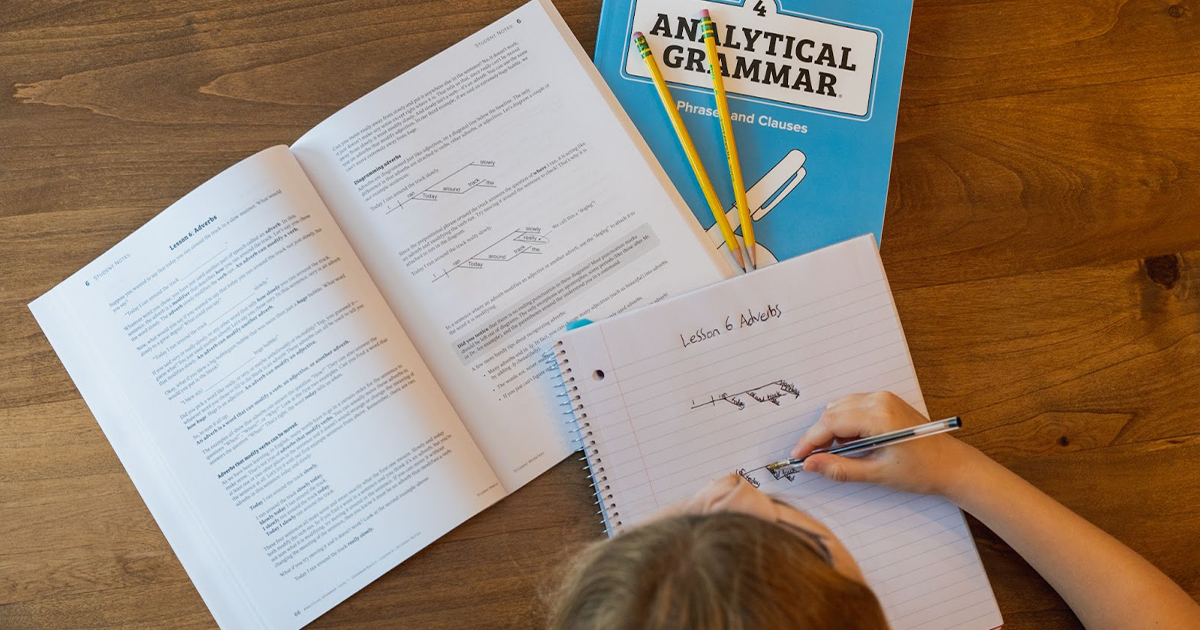Syntactic Awareness: What Is It and Why Is It Important?

In a world plagued by text speak, it often seems that grammar and syntax have been tossed out the window. Many teachers question why they should even bother teaching grammar when it’s as if the rules no longer apply. If that sounds like you, we want to encourage you not to give up on grammar instruction. In this blog, we’re sharing why you should continue building grammatical and syntactic awareness in your students as well as three tips for success.
What Is the Difference Between Grammar and Syntax?
While grammar and syntax are similar, they’re not synonymous. Let’s take a look at how these two commonly mixed-up terms differ from each other.
- Grammar: a comprehensive set of rules for a language, including how sentences are formed and the standards for correct usage.
- Syntax: the specific arrangement of words, phrases, and clauses to create a well-formed sentence.
Syntax acts as a subset of grammar. In other words, all syntax rules are grammar rules, but not all grammar rules are syntax rules. If you think of grammar as a big rule book, there would be a chapter in the book dedicated to syntax.
Syntax is important because the order of words and phrases within a sentence can greatly impact its overall meaning. For example, the sentences below have vastly different meanings just by swapping two words.
- My dog bit my brother.
- My brother bit my dog.
Of course, this is just a simple example, but word order and sentence structure become increasingly challenging when students begin to encounter compound and complex sentences. By building their grammatical and syntactic awareness from a young age, you will help your students become more effective communicators.

What Is Syntactic Awareness?
Syntactic awareness refers to the ability to understand and manipulate relationships among words to convey meaning while speaking, reading, or writing. Students gain basic syntactic awareness from a young age through oral language, and they deepen that knowledge as they’re exposed to written language during read alouds and independent reading.
What are the Benefits of Building Syntactic Awareness?
Teaching grammar and syntax rules offers significant value to students’ lives. Let’s dig a bit deeper into two main benefits of building syntactic awareness.
Clearer Communication Skills
Knowing the rules of grammar and syntax helps increase written and spoken communication skills. The goal of both speaking and writing is to ensure that your audience is able to understand what you want to communicate. By getting comfortable with parts of speech, proper usage, and sentence structures, students learn to express their thoughts more effectively.
Increased Reading Comprehension
Numerous studies have shown a strong correlation between syntactic awareness and reading comprehension. Students who understand grammar and syntax rules—such as the functions of words in a sentence and the meanings associated with word order, sentence structure, and punctuation—typically have a greater ability to make sense of what they read. The more they work with different types of sentences, the better they’ll be able to glean meaning while reading.

3 Ways to Increase Syntactic Awareness
Not exactly sure what to do to boost your students’ syntactic awareness? Here are three practical tips to help you get started!
1. Explicitly Teach Grammar and Syntax Rules
While children naturally pick up on grammar and syntax rules through daily communication, you certainly can’t assume that your students will gain all of the knowledge they need without explicit instruction. Start slowly by teaching students the function of words.
Parts of speech are the building blocks of sentences. Breaking down sentences into parts of speech and asking students about the function of various words will help improve both comprehension and writing. Once they have a firm understanding of parts of speech, you can move on to clauses, sentence structures, and mechanics.
2. Teach Syntax in Context
Explicit grammar instruction can only go so far without adding context. So, as you go throughout your day, be sure to seek opportunities to incorporate your grammar studies organically.
For example, pull some tricky sentences out of your read-aloud book, then work together to break them down. Ask your students how the meaning of the sentence could change if certain words or phrases were moved around or removed completely. You can also challenge them to rewrite the sentence using a different structure without altering the meaning.
3. Try Sentence Diagramming
Diagramming sentences is a great strategy to help students make sense of grammar and syntax rules. A sentence diagram serves as a visual representation of sentence structure that helps students see how parts of speech interact with each other.
Using a standardized set of rules and lines, students place words from a given sentence into a diagram based on how they relate. This visual exercise is especially useful to increase syntactic awareness, particularly when it comes to complex sentences.
Using exercises like sentence diagramming, our Analytical Grammar program helps students gain an in-depth understanding of grammar and syntax rules. By teaching grammar and building syntactic awareness, you will help increase your students comprehension and composition skills.